Culture
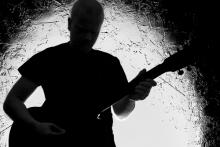
More than once I’ve been referred to as a modern-day Troubadour. I’ve always liked this designation because it has a romantic, archaic ring to it that sounds just a little bit more flattering than mere singer/songwriter, naturally appealing to my vanity. But it once occurred to me that I wasn’t entirely sure of its meaning and thought I should look it up.
Not surprisingly, I discovered the word to have various historical uses and nuances. But the definition that intrigued me most, and which I recognize as fairly accurate of my own sense of calling and vocation is this:
Troubadour:
a lyric poet sent by one (usually of the King’s court)
with a message of chaste love to another.
Well … there you go. Just two weeks ago (on Valentines Day) I posted a song and message of chaste love in a blog. In it, I celebrated 30 years of marriage to my wife Nanci; a union that has resulted in three beloved (now adult) children, their own unions to beloved others, two grandchildren, and a deeply meaningful, long-term foster relationship with a young woman and her beautiful children who, in fact, are coming over for dinner tonight. I can’t wait.
Although not every chaste union strives to produce offspring, Fr. Gabrielle of St. Magdalen, in his meditative devotional Divine Intimacy, teaches that the highest glory of the chaste union is in it’s potential to become a willing “collaborator with God in the transmission of life.” That is: a relationship that is materially fecund; suggesting a dark, loamy richness capable of concealing and safeguarding a vulnerable seed, and providing a nutrient-rich soil from which it can spring to it’s own leafy uniqueness. It’s a lovely image.
Ironically, what struck me this morning is that Valentines Day is celebrated at the very onset of the season of Lent. And Lent, in contradistinction to Valentines, is essentially a season where the Christian “faithful” penitently consider the devastating disaster that is infidelity — particularly, infidelity to God, and by extension, to all that God is in faithful relationship to.

Steven Spielberg’s Lincoln will probably nab a few of its 12 nominated Academy Awards when the Oscars are handed out on Sunday — a sign that Americans never have and probably never will tire of our 16th president.
Abraham Lincoln’s face is etched in stone on Mount Rushmore and his brooding statue sits enshrined in a Greek-style temple in Washington. His succinct Gettysburg Address (about 270 words) took all of about two minutes to deliver, yet remains this nation’s most famous speech 150 years later. His assassination lifted him to mythic status — a martyr who earned his place in our pantheon of national heroes.
We just marked the 150th anniversary of his Emancipation Proclamation, but that necessary action wasn’t enough. Spielberg’s film revives Lincoln’s second act, in 1865, to pass the Thirteenth Amendment to abolish slavery through a divided Congress. It wasn’t the only injustice Lincoln worked to correct.
In his recent book, When General Grant Expelled the Jews, Brandeis University Professor Jonathan D. Sarna recounts an important but little-known event in 1863 in Lincoln’s quest for full civil, religious, and human rights for all Americans — this time, for American Jews.

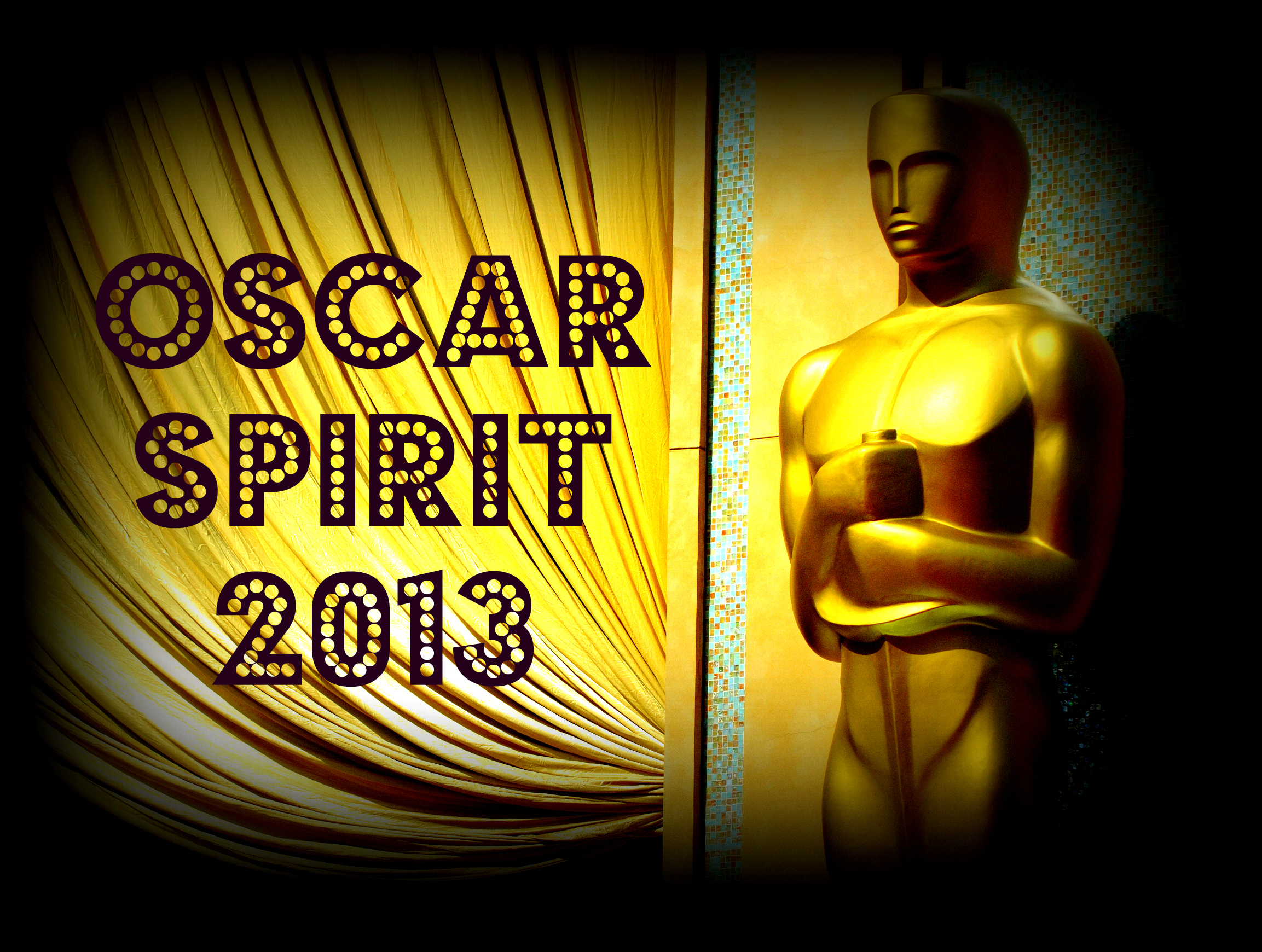 This week, in the run-up to Sunday's Academy Awards ceremony, we've been taking a look at each of the Best Picture nominees, the stories they tell, and the spiritual questions (and answers) they offer.
This week, in the run-up to Sunday's Academy Awards ceremony, we've been taking a look at each of the Best Picture nominees, the stories they tell, and the spiritual questions (and answers) they offer.
In today's final installment, we turn our attention to Lincoln, Silver Linings Playbook, and Zero Dark Thirty.
 Our friends and up-and-coming musicians Branches trekked all the way from California and stopped by our office in D.C. last week to play a couple of their songs during their East Coast tour!
Our friends and up-and-coming musicians Branches trekked all the way from California and stopped by our office in D.C. last week to play a couple of their songs during their East Coast tour!
Their songs explore the ideas of doubt, faith, loneliness, love, and above all, hope for life as it was meant to be.
Best friends turned band-mates, the lady and gentlemen of Branches are an independent, self-writing and self-producing collective. Birthed in a living room in the suburbs of Los Angeles in 2010, Tyler, Natalie, Jacob, Mitch, Tyler, and Mike have since spent their time together making friends, playing shows, and writing and recording the songs for their EPs ("O, Light!", "Cabin", "Covers", "Songs For Christmas") and their full-length ("Thou Art The Dream", released 2/12).
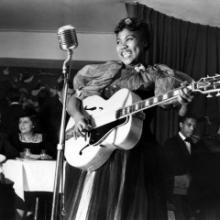
Before Elvis and Chuck Berry and Johnny Cash. Before Aretha and Whitney and Beyonce. Before the blues met gospel and conceived rock ‘n’ roll, there was Sister Rosetta Tharpe.
The first gospel superstar, Tharpe was a guitar hero in a flower-print dress whose bluesy chops and strutting style would be mimicked by countless acolytes, both white and black.
“I mean, she’s singing religious music, but she is singing rock ‘n’ roll,” said one such devotee, Jerry Lee Lewis, of “Great Balls of Fire” fame. “She’s hitting that guitar, playing that guitar, and she is singing. I said, ‘Whoooo. Sister Rosetta Tharpe!’”
Though no longer a household name, Tharpe gets the star treatment in a new documentary for the PBS series American Masters. Sister Rosetta Tharpe: The Godmother of Rock & Roll will be broadcast Friday on PBS in honor of Black History Month.

 The fragility of life. The servanthood of love. The (im)morality of war. The fundamentals of mercy and justice. The power of grace and forgiveness. The oneness of creation. The personal (and spiritual) toll of climate change. The nature of God and faith. These are some of the spiritual themes explored in the mostly august field of nine contenders for the 2013 Academy Award for Best Picture — Amour, Argo, Beasts of the Southern Wild, Django Unchained, Les Miserables, Life of Pi, Lincoln, Silver Linings Playbook, and Zero Dark Thirty.
The fragility of life. The servanthood of love. The (im)morality of war. The fundamentals of mercy and justice. The power of grace and forgiveness. The oneness of creation. The personal (and spiritual) toll of climate change. The nature of God and faith. These are some of the spiritual themes explored in the mostly august field of nine contenders for the 2013 Academy Award for Best Picture — Amour, Argo, Beasts of the Southern Wild, Django Unchained, Les Miserables, Life of Pi, Lincoln, Silver Linings Playbook, and Zero Dark Thirty.
This week, in the run-up to Sunday's Academy Awards ceremony, we're taking a look at each of the Best Picture nominees, the stories they tell, and the spiritual questions (and answers) they offer. Today we turn our attention to Django Unchained, Les Miserables, and Life of Pi.

 The fragility of life. The servanthood of love. The (im)morality of war. The fundamentals of mercy and justice. The power of grace and forgiveness. The oneness of creation. The personal (and spiritual) toll of climate change. The nature of God and faith.
The fragility of life. The servanthood of love. The (im)morality of war. The fundamentals of mercy and justice. The power of grace and forgiveness. The oneness of creation. The personal (and spiritual) toll of climate change. The nature of God and faith.
These are some of the spiritual themes explored in the mostly august field of nine contenders for the 2013 Academy Award for Best Picture -- Amour, Argo, Beasts of the Southern Wild, Django Unchained, Les Miserables, Life of Pi, Lincoln, Silver Linings Playbook, and Zero Dark Thirty.
2012 was an extraordinary year for film. This year's Best Picture field is perhaps stronger than it's been in recent memory, replete with nuance and substance, each film presenting a uniquely compelling and memorable tale that both informs and reflects our culture, sensibilities, and challenges.
A few of the nominated films employ overtly religious ideas and language (Life of Pi, Les Miserables, Lincoln), while others tackle daunting ethical issues that speak to our deepest identities and values (Argo, Djano Unchained, Zero Dark Thirty), or explore the sacred landscape of friendship, family, and unconditional love (Amour, Beasts of the Southern Wild, The Silver Linings Playbook.)
For the next three days, we'll look at each of the Best Picture nominees, the stories they tell, and the spiritual questions (and answers) they offer.

Just as the winter months tend to bring a mellower, melancholic feel to life, so too can music. And some of this month’s more obscure releases do just that. If you’re looking for an album to check out on a dreary winter morning, look no further.
That’s not to say at all that they’re bad releases. One can quickly point to the likes of Bon Iver or Radiohead as figureheads of melancholy. They’re just different from the bubbly pop one might hear a lot on the radio.
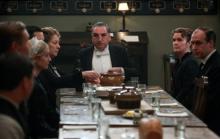
The third season of the megahit PBS series “Downton Abbey” wraps up on Sunday, capping another must-see run of ruin and redemption at Lord Grantham’s stately English manor. Yet some are still left puzzled over the absence of what should be a leading Upstairs player in this colorful cast: God.
Writing last month in the flagship evangelical magazine Christianity Today, Todd Dorman wondered why — despite the heart-rending melodrama and all the “divine trappings” that gild the 1920s scenery — “God is a peripheral presence at best.”
“There are numerous fascinating blog posts … that search for implicit Catholic and Christian themes in the show — good and evil, suffering for cause, various types and grades of love and devotion,” Dorman wrote. “At some point, though, especially with a vicar in the family’s employ, it seems odd for such connections to remain unnamed, unspoken, and, for all we can see, unperceived.”
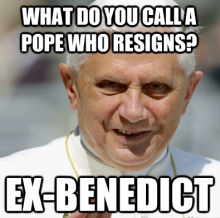
With the Pope's unexpected resignation, and consequent endless "Ex-Benedict" memes, millions have taken to the Internet to voice their opinions on who will become next at the top of the Catholic hierarchy.
Here are some of the standouts.

AS WE MOVE along in 2013, more initiatives will be coming on line from Obamacare (technically the Patient Protection and Affordable Care Act, although if you rearrange the letters it spells "death panels"). Starting next year, insurance companies can no longer deny coverage for anyone with pre-existing conditions, which is good news for Mitch McConnell, who might want to have his permanent frown removed. Additionally, the law requires that all tea party members take a spoonful of castor oil before bedtime and wear coarse undergarments close to the skin. (Hey, it was a big bill, with lots of fine print.)
What won't change, however, is our relationship to the pharmaceutical industry, known as "Big Pharma"—which is not, as you may have thought, the nickname of a linebacker from one of our agricultural-state colleges, but rather shorthand for "companies that combine ground-breaking science with the business model of a crack dealer." No offense to crack dealers.
I recently had a personal experience with Big Pharma, after two weeks with a projectile cough that filled the middle distance with an alluring prismatic mist. Office colleagues did not appreciate my little air rainbows, so I contacted my doctor for advice, using the convenience of email rather than driving over and changing into a disposable paper gown which—and I feel strongly about this—does not adequately flatter the body of a mature man.
I described my symptoms with a level of detail that only a professional writer can do, using the lushness of the English language to create a memorable narrative of my condition and symptoms. Naturally, I expected my doctor to reply in kind. But she didn't: "You're sick. Here's a prescription." (Science geek.)
JUST A FEW dozen pages into Faith, Doubt, and Other Lines I've Crossed, evangelical pastor Jay Bakker pens what may be the best explanation for the Christian emphasis on church community that I've ever encountered. Noting that doubt can be "hard and scary," Bakker writes: "That's why we have one another, why we have community. We can go through those days of doubt together. I wouldn't be who I am today if it weren't for the people who have been there with me as I question everything."
Many writers have grappled with the challenge that doubt poses for religious believers. But in this honest, searching, and ultimately uplifting book, Bakker pulls doubt out of the shadows where many believers wrestle with it on their own and instead presents it as a reality that Christian communities can and should address together.
Bakker's approach to the often-taboo topic of questioning—or, as he puts it, "the sense that faith is crap, life is meaningless, there is no God, the Bible is a fraud, Jesus was just a charismatic man turned mythological figure if he existed at all"—is shaped by his childhood in a Pentecostal environment that left no room for doubt. As Bakker ruefully notes in the book's introduction, "I will probably be 80 years old and still introduced as Jay Bakker, son of Jim and Tammy Faye." That unusual background only provides the impetus, however, and not the substance for this book, which reads mostly as the stream-of-consciousness meditation of a man pushing and pulling at his faith to see if it holds up.
TODAY, Greg Bright, 56, sits on the cement porch of his yellow clapboard house in New Orleans' 7th Ward and rests his hand on the head of his yellow dog, Q. It is 2012, and he often finds himself musing over the notion of time—time past, time lost, time wasted. "It feels like a minute since I been out here," he says. It took some time to adjust to life on the outside, he admits, and once, on a dark rainy morning as he found himself biking seven miles in the rain to his miserable job working the line in a chicken plant in Mississippi, he felt real despair—just recognizing that he was 47 years old and had never owned a car. He tried hard to dismiss the sobering thought that, arrested at age 20 and doing 27 years of time, he'd been "seven more years in prison than I was on the streets." Sometimes, he says, "it's little things like that" that really threaten to drag him down into sorrow.
So he chose to do something that both keeps those wasted years fresh in his memory yet also mitigates the sense of powerlessness he sometimes feels. He helps to educate others in the hopes that his story will spur reforms. He is not an educated man—his formal schooling stopped in sixth grade—but he is one of dozens and dozens of ex-cons who form a vital link in the post-Katrina criminal justice reform efforts through various organizations such as Resurrection After Exoneration, a holistic reentry program for ex-offenders, and Innocence Project New Orleans. Greg tells his story to students, activists, politicians, church groups, friends, strangers—anybody with time to spare and an inclination to listen—doggedly putting a face on an abstract idea, injustice.
A FEW YEARS before American naturalist John Muir heeded the call of the California mountains, the boggy swamps and towering palm trees of a much flatter territory beckoned him south to the Gulf Coast states. As for many young travelers before and since, a journey into exotic lands was a path toward vocational and spiritual enlightenment for Muir.
In Restless Fires: Young John Muir's Thousand-Mile Walk to the Gulf in 1867-68, Whitworth University emeritus professor James B. Hunt explores how that trip forever changed Muir's perspectives on humans' relationship to the natural environment. Digging deep into Muir's childhood, Hunt details how Muir's theological transformation shaped his environmental stewardship.
It's a wonder Muir maintained any divine belief system. Muir's Scottish father, a strict practitioner of Campbellite Christianity, nearly beat faith out of him, combining forced Bible memorization with harsh physical punishment. Hunt contends an unfortunate twist of fate may have opened the door to Muir's escape from suffocating under zealous religion and monotonous factory life. He lost an eye while working as a machinist, which caused temporary sympathetic blindness in his other eye. As soon as Muir was able to see again, he left the Midwest in a southward walk toward what he imagined was North America's Eden.
OVER DINNER my friends and I reflected recently on the headlines that surprised us last year. A few were especially painful: former Rep. Todd Akin's comment that "legitimate" rapes do not lead to pregnancies; failed Senate candidate Richard Mourdock's comment that a pregnancy from rape is "something that God intended to happen"; and the Violence Against Women Act (VAWA), in effect since 1994, ending as the 112th Congress closed without reauthorizing it. All reminded me why the second edition of The Cry of Tamar: Violence Against Women and the Church's Response, by Pamela Cooper-White, is still needed almost 20 years since its first edition.
The Cry of Tamar reads as a graduate textbook on providing pastoral support for the victims of violence against women. It weaves pastoral counseling methods and social and psychological theories in dialogue with biblical exegesis and constructive theology to give clergy, pastoral caregivers, and religious leaders tools to help victims of violence and the larger Christ-community.
The story of Tamar, a girl raped 3,000 years ago in Jerusalem, frames and guides the book's goal of providing healing to the girls and women who are victims of violence today.
Advocacy, prevention, and intervention to stop violence against women have advanced since the 1995 first edition. Religious communities and congregations have become more informed about how to care and respond to both victims and perpetrators. But the need for increased awareness and education is ongoing. This second edition is an effort to update the conversation and keep it on the table.
WE SHOULDN'T really expect the Oscars to grasp the point of history, though this year the films nominated for Best Picture are a fascinating snapshot of what ails—and could heal—us.
Zero Dark Thirty takes a clinical view of the search for Bin Laden and has been criticized for its portrayal of torture as effective. To my mind this debate may miss the wider question: Torture is bad enough, but a central assumption about the efficacy and validity of killing for peace—that shooting an old man in his bedroom would solve anything—is worthy of enhanced interrogation.
The point is missed also in the brouhaha about Django Unchained, Quentin Tarantino's thrilling satirical Western. People are up in arms about the comic book violence and use of the N-word—but this is perhaps the most powerful, even indelible, portrayal of the violence of slavery ever made for a mainstream audience. Two wrongs don't make a right, and the revenge arc in this film should be questioned, but Tarantino has done a moral service in not sanitizing his fictionalization of historical memory. Lincoln is the perfect companion piece—I highly recommend you see both. Django Unchained uses B-movie tropes to vastly entertain while confronting the real horrors Abraham Lincoln was fighting to end. Lincoln is a theatrical history lesson that delicately handles the moral authority competitions, language games, and political complexity behind the 13th Amendment.
AS THIS IS written, the Federal Communications Commission is, again, preparing to rule on a revision of its media ownership rules that could, again, allow the few remaining mass media conglomerates to own even more of what are currently competing local news outlets. For one thing, the proposed revision would allow Rupert Murdoch's News Corporation to have its Los Angeles and Chicago TV stations and eat the L.A. Times and Chicago Tribune, too.
Five years ago, the Bush administration's FCC commissioners tried this move, but it was routed in a decision by a federal appeals court. But, just in time to quash any illusions that a second Obama administration might be less friendly to corporate power, Julius Genachowski, the Obama-appointed FCC chair, tried, at the end of 2012, to quietly slip in this new set of Murdoch-friendly ownership rules. The only reason it may not have happened already is because he raised the issue at the same time that an FCC report on minority media ownership arrived showing the share of outlets owned by people of color to be only 2.2 percent for commercial full-power television and 6.2 percent for commercial AM radio. This, needless to say, raises questions about the wisdom of further media consolidation.
Over the decades, this column has spilled a lot of ink on the subjects of the FCC, media policy, and, especially, media ownership. I haven't obsessed over these issues because of any love for the details of broadband allocation and other regulatory minutiae. In fact, I struggle to understand some of those matters just well enough to try and explain why they are important. But they are important, mostly because deregulated and monopolistic mass media impinge upon our ability to effectively exercise our God-given free will and participate rationally in the process of self-government.
The Whole Gospel
Ken Wytsma's Pursuing Justice: The Call to Live & Die for Bigger Things is a passionate evangelical argument for making justice central to a gospel-rooted life. For those who already embrace social justice in their faith, it is a spiritual refresher and resource for engaging with more wary Christians. Thomas Nelson
Their Future, Our Future
Girl Rising, a feature film on the power of education in the lives of nine girls from the developing world, releases March 7. It is at the center of a social action campaign for girls' education called 10x10, launched by former ABC News journalists. Learn more, advocate, or organize a screening. 10x10act.org

IF YOU ARE not overly familiar with the repertoire of a Leonard Cohen concert, it's hard to tell the new songs from the old. Songs from a different age sound neither anachronistic nor nostalgic, while the new echo as though they have been around forever. It's the same show night after night, with songs from the latest album, Old Ideas (released in 2012), woven into the familiar canon. Cohen tells audiences that his revivalist tour might end in two years, so that he can start smoking again by the time he turns 80.
It is a joke you know Cohen has cracked a hundred times, the kind that makes my brother call him the Jewish Dean Martin. The humor is one part of a precise choreography, whose arrangements shift from blues to waltzes to New Orleans jazz, Celtic, gospel, country, and disco, all set in the mode of Hebrew Minor and conspiring to create a vivid world that does not exist, except in paradox. Honey is the texture that comes to mind. Viscous and turbid, neither solid nor liquid. Sensual relief from the coarse, metallic world. And sweet. Sweet in the meaning of the verse from the Persian song "Navaee"—"High sweet melody, and sadness of love, dwelling in the bottom of the heart, where nobody sees"—the mixing of sorrow and transcendence into sublime paradox.
He is and has been many things to his devotees: poet, singer, writer, band leader, lover, satirist, artist, and novelist. But one thing Leonard Cohen is not is a preacher.
Prostrating and posing on bended knee, eyes knit tight, hat pulled low—he could say anything he pleases, from treatises to treason, and people would listen. Given a room and a crowd, the born preachers cannot tame the urge to climb atop the pulpit. This political instinct to prophesy and govern is noted but subdued in the opening song of Old Ideas, called "Going Home," the cry of an old man liberated from burdens of desire for love and for mission: "He will speak these words of wisdom / like a sage, a man of vision / though he knows he's really nothing / but the brief elaboration of a tube ... a lazy bastard living in a suit."
